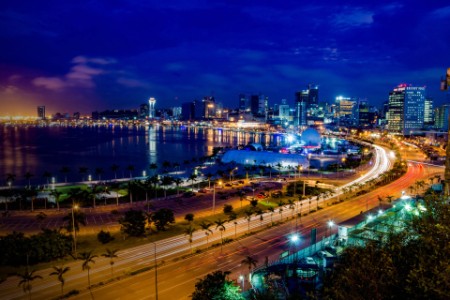
Chapter 1
One of the last frontier markets
Debt and COVID-19 pandemic present concerns, but Africa also has large and stable markets with a growing middle class that have disposable income.
Sub-Saharan Africa’s near-term economic outlook was decidedly mixed, even before coronavirus began to strangle the global economy. GDP growth was set to grow at a 3.6% rate in 2020, according to the International Monetary Fund’s forecast, a decimal point higher than the global prediction4 — but then, that was cut to a 1.6% contraction.5
Debt burdens are on the rise, given that many leading African countries were welcomed into global Eurobond markets in the 2010s and accepted bilateral loans — often at interest rates lower than commercial finance, but higher than what multilaterals charge. Debt-to-GDP ratios were creeping back toward the levels seen in the early 2000s, before a major round of debt relief from the Paris Club, a group of 22 Western sovereign creditors.6 As of 2020, the average national budget deficit was 4%, above the recommended norm of 3%.7
What really attracts FDI are large and stable markets with growing middle classes that have disposable income.
Debt relief packages were in negotiation at the time of this article’s publication, although many of the FDI hotspots in Africa might be excluded on the grounds that they are no longer poor — the World Bank’s classification system pegs most of them as middle-income countries.
In Kenya, an aid fund that an EY team was approached to help create and manage was capitalized with voluntary salary cuts taken by public officials, including President Uhuru Kenyatta. In mid-April, Ghanaian Foreign Minister Ken Ofori-Atta described the challenges for the Financial Times: “I have, in one fell swoop, lost more than $1b of revenue as domestic taxes continue to shrink, compounded by lost productivity and job losses,” he wrote. “We still have an obligation to service our debt portfolio.”
The pandemic makes debt burdens a bigger concern. Most African Eurobonds were sold with backloaded repayment schedules, and chunk payments are due in the next several years. If the pandemic shrinks global bond investors’ appetites to refinance deficits, some states may struggle to refinance. Ghana had good timing in that it sold US$3b in Eurobonds in February, just before the spread of the virus, and with two-thirds structured in maturities of 15 or 41 years.8
But for many investors, year-to-year developments and disruptions such as the pandemic are viewed as temporary conditions that matter less than the fundamentals.
“What really attracts FDI are large and stable markets with growing middle classes that have disposable income,” says Matthew Stephenson, Policy and Community Lead for International Trade and Investment for the World Economic Forum. “Countries without those traits will have to set themselves apart either through uncommon resources or location, or an extra-friendly regulatory framework."
Beginning with strides made 30 years ago, African countries increasingly fit the description. While individual countries’ challenges with unstable governments are well-documented, the last three decades have seen steady progress towards political stability. Multiparty elections have become the new norm for choosing leaders, and that led to peaceful transfers of power: 9 from 2010 to 2014, and 26 from 2015 to mid-2019.9
The data shows capital expenditure on FDI was flat in 2018, but the actual value of it to the source countries was greater.
With politics stabilizing, demographics are an even more durable structural factor driving FDI. The median age is 18 for the continent, 14 years younger than any other.10 Africa is the only place with its birth rate certain to stay above replacement rate, says Darrell Bricker, author of Empty Planet. “This trend isn’t for this week or this year — it’s locked in for a generation,” he says.
So, for the foreseeable future, Africa alone will have a growing amount of young people as consumers and workers. That makes the move beyond extractives investment that much more important. "Natural resource investments create relatively few jobs, and even fewer skilled jobs," says Lisa Sachs, Director of the Columbia Center on Sustainable Investment at Columbia University in New York. "Investments in other sectors are needed to create good jobs and address other development goals as well."
The EY database confirms this. Whereas extractive sectors accounted for more than half of the investment in 7 of the 14 years in the database, they accounted for more than half of jobs just once, and haven’t provided more than 30% of job creation since 2011.
The data, compiled by FDI Intelligence and analyzed by EY professionals, includes new projects or expansions, but excludes mergers and acquisitions, so it’s a measure of additional activity only. “The data show capital expenditure on FDI was flat in 2018, but the actual value of it to the source countries was greater,” says Wolfenden.
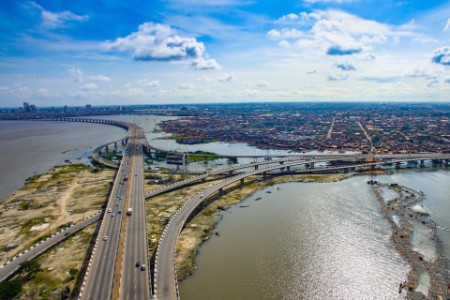
Chapter 2
Cities-out strategy
Urban areas, corridors and regions present opportunities more than strategies centered solely on a given country on the continent.
As investment spreads to more sectors of the African economy, investors are also thinking in new ways about its geography. Investment rationales are less frequently based on country-level economics, and more often focused on urban areas, corridors and regions. Leading cities, such as Lagos (Nigeria), Johannesburg (South Africa) and Nairobi (Kenya) stand out for their financial-technology hubs, middle-class consumers and connectivity.
Africa’s leading cities account for 80% of consumers with the disposable income to acquire assets such as cars, televisions and appliances, according to research from Fraym, a US consultancy. Beyond the top three in sub-Saharan Africa are: Luanda, Angola; Khartoum, Sudan; Dar es Salaam, Tanzania; and Addis Ababa, Ethiopia.
Kinshasa, the capital of the Democratic Republic of the Congo, stands out as a city with consumer power. It’s on the western side of the country, and a 2,000 km drive from the conflict at its eastern border. “Kinshasa is an under-told story because of the broader narrative,” says Fraym CEO Ben Leo. “There’s scale in Kinshasa, and a surprising amount of consumer power.”
For the long term, cities have the potential to serve as anchors for region-based investment strategies, in particular given the 2019 announcement of the African Continental Free Trade Area. “It’s going to be a long journey, but 2019 will be remembered as the year Africa finally ‘got’ trade,” says Eyinla. “It’s a monumental commitment that will produce the largest free-trade area in the world.”
The deal is also a signal to investors at a time when they are evaluating global supply chains. In the EY Global Capital Confidence Barometer in March 2020, 52% of executives said the pandemic has led them to consider relocating some of their functions. “Africa can make a stronger play for manufacturing and supply chain opportunities that have been anchored in the east,” says Wolfenden.
The survey also found 36% of companies had already accelerated investments in automation, which suggests Africa will have to compete with technology as well as other regions. “We could see supply chains move back to the US and Europe, because companies will be thinking very hard about having sources too far away from their consumers,” says Eyinla.
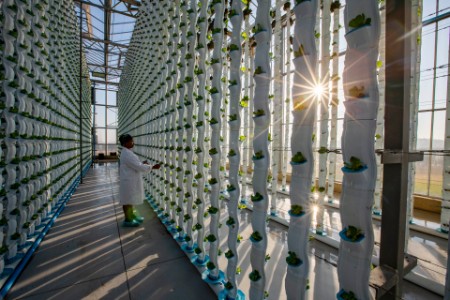
Chapter 3
A stronger foundation, with increasing diversification
Falling FDI rates don’t tell the whole story: dynamic opportunities are developing in sectors outside the traditional extractive industries.
Africa attracted less FDI capital than any other region in 2018, and the investment level per project has also fallen. That reflects the shift away from extractive-sector investments, which are typically the most capital-intensive. “The underlying drivers of investment are more diverse now,” says Wolfenden.
Mobile phones are one of the most powerful of these new drivers — the number of mobile-phone subscribers in Africa surged by 2,500% from 2000 to 2012.11 Africans use them for commerce as well as communication, creating a new value chain in the process. Of the 729 new FDI investments in Africa in 2018, according to EY calculations, 18% were in the technology, media and entertainment and telecommunications (TMT) sector, the largest share for any single sector.12
The first and most famous example of telecommunications creating a value chain is M-Pesa, the Kenyan mobile-money platform. It was created to send money between people and has blossomed into a marketplace. Kenyans can use it to buy insurance, pay a barber, borrow money, or finance a pay-as-you-go solar-power system.
“It has impacted each and every sector of the economy,” says Francis Kamau, a partner at Ernst & Young LLP, Kenya. “The bankers use it, and the president uses it. My mother-in-law is 85 and she uses it.”
While these new tools are helping to broaden investment rationales, the destinations of choice for FDI are mostly familiar, according to an EY blended ranking incorporating the overall number of jobs invested, capital expenditure and job creation: South Africa, Nigeria, Ghana, Kenya and Ethiopia.13 They stand out for different reasons and types of opportunity.
South Africa is the most developed of sub-Saharan economies, with its deepest capital markets and understanding of the continent because, in addition to being a favored target for FDI, it is the fifth-largest source as well.14 South African retailers are among the most visible brands across the continent, such as MTN, the telecommunications provider, or Shoprite, the supermarket chain.
Nigeria and Ethiopia are the two countries in sub-Saharan Africa with 100 million people or more. Nigeria is also a known investment destination for oil and gas and hosts an emerging technology hub and start-up culture. Ethiopia is home to Ethiopian Airlines, the continent’s largest airline, which makes Addis Ababa an emerging transportation hub.
Ghana and Kenya stand out for their relative political stability and economic diversification. Both export natural resources but aren’t dependent on any single one. Their challenge is to develop more domestic supply chains to generate economic value before exporting. Côte d’Ivoire, on Ghana’s western border, is another example of diversification. Together, the two countries produce about two-thirds of global cocoa output.
“Investing in Africa is sometimes like taking three steps forward and then one step back,” says Justin DeAngelis, a partner at Boston-based Denham Capital, which has invested in power generation across the region. “But as long as there are governments focused on sustainably growing their respective countries, it will be a good place to be.”
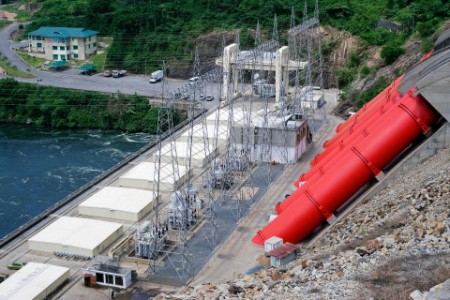
Chapter 4
Prioritizing infrastructure to power growth
As fiscal governance improves in Africa, so do countries’ ability to build infrastructure and establish public-private partnerships with foreign investors to do so.
FDI strategies vary by sector, but success stories in recent years illustrate common themes. As fiscal governance improves, so does a country’s ability to build infrastructure or establish public-private partnerships (PPPs) with foreign investors to do so. A smooth entry into African economies often comes through profitable projects that also address governments’ priority areas, by establishing strategic partnerships to address specific obstacles, and by leveraging the emerging value chains now in development.
The continent’s shortage of power plants, roads, railroads, ports, hospitals and schools is substantial — an additional US$94b in financing on an annual basis is required until at least 2025 to close the gap.15 African governments hope that efforts such as PPP laws, government guarantees, long-term contracts and concessions, and specialized task forces to work with investors will combine to serve as a red carpet. New points of contact for investors include the Kenya Government’s PPP Unit and the Lagos State PPP Office to facilitate PPPs in Africa’s biggest city.
In some cases, these government agencies, as well as international organizations and bilateral aid and development agencies, are willing to help investors overcome obstacles by offering sovereign guarantees, political-risk insurance, financing and instruments. For example, the US Government’s Power Africa program gathers the resources and risk mitigation tools of 12 state agencies to bring more electricity to the region, where two in three people suffer from a lack of reliable access.16
Local partnerships are often useful for land acquisition, which often triggers cultural sensitivities in many sub-Saharan states. Land registries are often incomplete or inaccurate, and non-governmental actors such as the leaders of ethnic groups or communities often wield power.
Rather than attempting to buy land, investors have often instead provided a small slice of equity to landowners, which can be private or public entities. Providing equity to state- or provincial-level governments for land helped Persianas Group develop malls in Nigeria, for example, boosting local support and political will for the projects.
Several main value chains have emerged in the two decades since FDI broadened beyond extractives, based on telecommunications, agricultural and energy. When Africa’s state-owned legacy telecommunications providers opened their markets in recent decades to privatizations and license sales, that allowed the private sector to usher in an era of mobile telephony that the states could not.
In the next step, now that Africans had access to cheap phones, a UK telecom company partnered with the UK Department for International Development and the Kenyan telco Safaricom to develop M-Pesa. That created a virtuous cycle in which foreign entrepreneurs leveraged the payments system and the data it created to do things such as secured lending on a pay-as-you-go basis for home solar-energy kits.
This made-in-Africa model is now spreading elsewhere in the Global South.17 Rapid take-up of mobile-money platforms spread to neighboring Tanzania and across the continent.
The energy-based value chain starts with Africa’s petroleum riches, especially the natural gas finds offshore in both the Atlantic and Indian Oceans. The gas-to-power narrative is a more complex one than telecommunications, with more counterparties and long-term contracts required to finance the considerable infrastructure required to move gas to power plants. But if more of these long-term projects reach completion, opportunities open up in manufacturing, and the coveted jobs that factories bring.
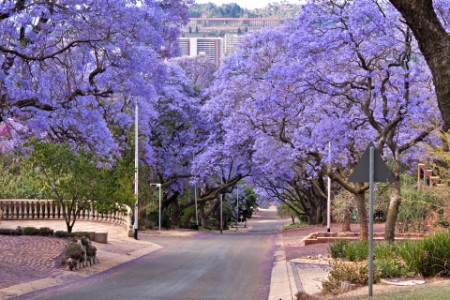
Chapter 5
The maturation of politics … and revenue systems
Governance is poised to evolve in other agencies and institutions, such as finance ministries, electricity utilities and tax authorities.
For DeAngelis and Denham, Ghana has emerged as a key destination for building power plants, even though the country’s existing utility struggles to distribute the power now generated, and to get people to pay for what they use. The state says its contracts with private power producers leave it with a surplus it is contractually obligated to pay for, even if not used.
But for most African countries, that’s a nice problem to have — most struggle with supply deficits that cause blackouts, and less than half of Africans have access to power.18
Most African governments are open to private investment in power, particularly in building new generation capacity. But this means spending hundreds of millions of dollars up front, and being comfortable with the local utility company’s ability and willingness to pay for the output.
Investors like Ghana due to its reputation for good governance and the general peace it has enjoyed over time. Ghana has a judiciary seen as independent of the executive and the legislature and a free press. There is plenty of room for improvements in governance, but the basic building blocks are in place, says Solomon Lartey, who recently resigned as CEO of the insurance company Activa Ghana to found the Africa Sureties and Insurance Advisory Company, which aims to address access-to-finance issues for small businesses. “If you come here and play by the rules, the system will work in your favor,” Lartey said.
With those basic building blocks increasingly in place in Africa’s leading FDI recipients, maturation in governance should next spread to other agencies and institutions, such as finance ministries, electricity utilities and tax authorities. In many leading African countries, tax authorities were formed in the 2000s, and are now implementing digital systems to boost collections and make the process easier for taxpayers.
The EY organization has helped to establish a group called the Prosperity Collaborative, a multi-stakeholder initiative with The World Bank, the Massachusetts Institute of Technology, the Boston Global Forum and New America. The group is developing new and open-source solutions for tax collection using new technologies such as blockchain and artificial intelligence.
“Investors shouldn’t come to Africa because of what it is now,” says Wolfenden. “You want to be here for what it’s becoming.”
Summary
African countries are now more stable and predictable places to live, work and build businesses. All this is happening in the last region of the world offering a demographic dividend: sub-Saharan Africa will soon be the only place with birth rates at replacement level or higher. New value chains based on telecommunications platforms, agribusiness, and energy are now developing.
